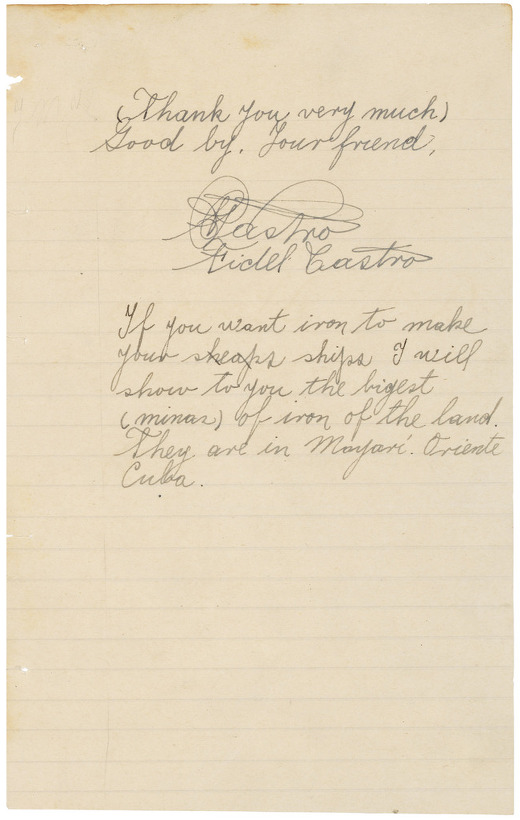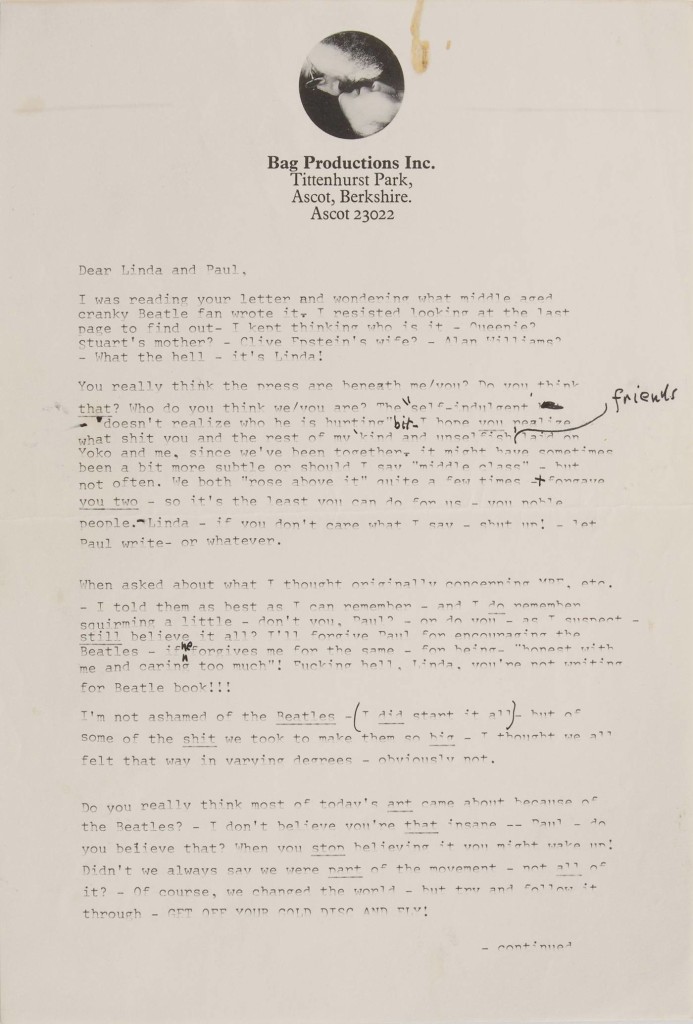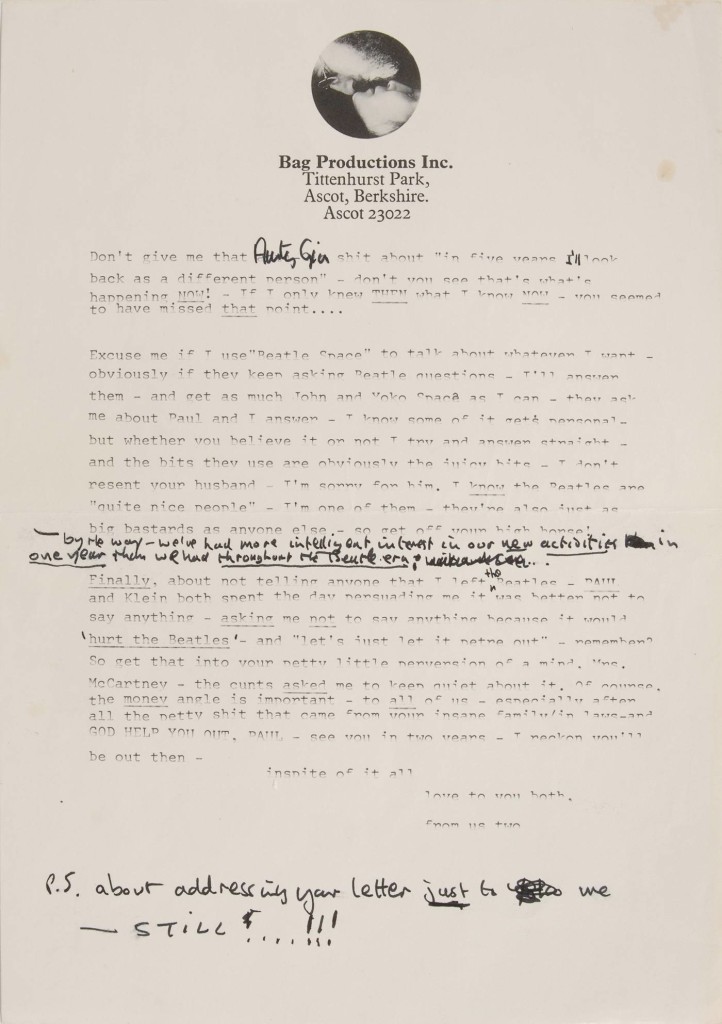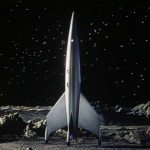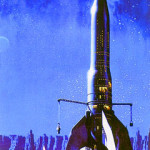Category Archives: English
Pocket Notebooks – The Return of 19th Century Mobile Media
 Ten years ago, who would have thought that in a world oversaturated with “smart” phones, old-fashioned notebooks would once again become a “hot trend”? And that they would be passionately fawned over by the younger generation – online, of all places?
Ten years ago, who would have thought that in a world oversaturated with “smart” phones, old-fashioned notebooks would once again become a “hot trend”? And that they would be passionately fawned over by the younger generation – online, of all places?
In a way, history is repeating itself. While the story of portable notebooks goes back a long way (Leonardo da Vinci, 1452–1519, was reportedly never seen without one), the real breakthrough came in 19th century Paris. The world’s artist capital at the time was home to thousands of young creatives, thinkers and dreamers. New movements such as Impressionism demanded that artists leave their stuffy studios and cramped writer’s desks and instead move out into the world – in search of natural light, common people and all that life had to offer. Artists, it was demanded, should create in the midst of the sights and sounds of the outside world. A new and exciting artistic focus and methodology took hold. Here lie, we can argue, the true roots of today’s creative mobile work culture.
The now unconfined free-range artists of Paris needed – in modern parlance – “portable media” to “create and access their content” wherever they went. Soon, Parisian book binders were doing brisk business with blank, compact notebooks to be carried around constantly and almost anywhere: small, but sturdy enough for both pocket carry as well as use on a tiny café table. Or on a knee while lounging on a park bench. Or while laying flat on the ground among Mother Nature’s glory.
Demand for the hand-made creations of hundreds of Parisian artisan book binders swept across Europe. Soon, German, Italian and English craftsmen eagerly joined the trend. Decades later, English author Bruce Chatwin summed up the importance of these personal notebooks: „To lose a passport was the least of one’s worries: to lose a notebook was a catastrophe.“
But eventually, economic crisis and two world wars changed consumer priorities. When the post-war dust settled, mass production in cheap labor countries and the rapid adoption of the disposable ballpoint pen turned personal notebooks from prized expressions of creativity to generic commodity. By the 1980s, high-quality, stitched pocket notebooks had become a rare specialty item. Instead, mass-market retailers were stocked with soulless notebooks of inferior quality and little consistency. Most were cheaply stapled, glued or spiral bound. The paper? Thin, highly acidic scratch paper lacking durability. Little of it was suitable for writing or drawing in ink – and didn’t need to be, since by then, equally soulless, disposable plastic sticks had become the most popular writing instruments. For fountain pen users (including this author) the situation was rather frustrating. Many gave up and never adopted consistent pocket “notebooking” habits.
But in a surprising turnaround, things have changed dramatically. High quality pocket notebooks are widely available gain, and their makers are enjoying great commercial success.
Modern pocket notebooks incorporate various innovations, such as highly flexible, innovative bindings, and some even make it very easy to digitize content and share it in the digital realm.
To read more, please see my article on pocket notebooks in the June 2017 issue of Pen World magazine, the world’s largest publication for fountain pens and fine writing instruments.

And if you like pens as much as I do, I highly recommend subscribing to this excellent magazine. A bargain at $42 in the U.S.! (International subscriptions are available).
R.I.P. Susan Wirth (1946 – 2017)
I am mortified by the news of the unexpected death of Susan Wirth, who was widely known in the world of fountain pen aficionados and collectors.
I met her at the Los Angeles International Pen show and looked forward to seeing her again every year. We never got to talk much (she was always very busy) but it was fun seeing her in action: just being Susan Wirth, the colorful personality she was.
Over the years, I’ve brought many newcomers to the pen show – people who didn’t know anything about pens, inks and papers, and who were both impressed and confused by the frenzied activity and plethora of displays. These poor souls who were too confounded to see the trees in the forest, I always sent to Susan.
With anyone interested in pens, Susan had the patience of an angel. She didn’t mind if people just looked, touched and tried, or asked uninformed questions. In fact, she encouraged it. Best of all, she had the gift of putting intimidated newbies at ease. Her enthusiasm was infectious and her encouragement and advice turned hesitant rookies into converts. Nothing seems to have made her happier than knowing she had spread the love of pens and manual writing to yet another person, or as the put it on her web site: “Specializing in helping people find pens that enhance their writing”.
Susan never pressured anyone to buy from her table, nor did she talk people into particular pens or nibs. Rather, she was a matchmaker, always on a quest to find the pen most fitting for a person’s hands and needs. If she didn’t have it, she was always willing to offer advice on where else that perfect, yet elusive match could possibly be found. To her, locating the right pen was like a treasure hunt, and she took genuine pleasure from being part of it. On many occasions, she even walked prospective buyers to another seller’s table and made the introduction.
Susan was a down-to-earth, common sense person. Much of the advice she gave to beginners makes perfect sense, but is nevertheless often not followed even by seasoned buyers: when trying out a pen, do extensive writing tests in a natural writing position – not while standing and bending over. And try writing what you normally write – not just names and frequently used phrases.
Susan wasn’t afraid to get ink on her fingers and in fact wore it as a badge of honor. On occasion, she gregariously referred to herself as “the Queen of Ink”.
I will miss her.
The June 2017 issue of Pen World magazine (at which I serve as Contributing Editor) will have more coverage. Meanwhile, here is the obituary in the Milwaukee Journal Sentinel.
Why California Is Broke And Texas Is Not
(according to Richard W. Fisher, former President and CEO of the Federal Reserve Bank of Dallas)
California
The Governor of California is jogging with his dog along a nature trail. A coyote jumps out and attacks the Governor’s dog, then bites the Governor.
The Governor starts to intervene, but reflects upon the movie “Bambi” and then realizes he should stop because the coyote is only doing what is natural.
He calls animal control. Animal Control captures the coyote and bills the state $200 testing it for diseases and $500 for relocating it.
He calls a veterinarian. The vet collects the dead dog and bills the State $200 testing it for diseases.
The Governor goes to hospital and spends $3,500 getting checked for diseases from the coyote and on getting his bite wound bandaged.
The running trail gets shut down for 6 months while Fish & Game conducts a $100,000 survey to make sure the area is now free of dangerous animals.
The Governor spends $50,000 in state funds implementing a “coyote awareness program” for residents of the area.
The State Legislature spends $2 million to study how to better treat rabies and how to permanently eradicate the disease throughout the world.
The Governor’s security agent is fired for not stopping the attack. The state spends $150,000 to hire and train a new agent with additional special training regarding the nature of coyotes.
PETA protests the coyote’s relocation and files a $5 million suit against the state.
Texas
The Governor of Texas is jogging with his dog along a nature trail. A coyote jumps out and attacks his dog.
The Governor shoots the coyote with his state-issued pistol and keeps jogging. The Governor has spent $.75 on a .45 ACP hollow point cartridge.
The buzzards eat the dead coyote.
And that, my friends, is why California is broke and Texas is not.
Noir City
While attending this year’s Noir City Film Festival in Hollywood, I was reminded of a photograph I took last year: the interior of a vintage Los Angeles Police Department patrol car.
Fidel Castro’s Letter to Franklin Roosevelt
Fidel Castro died at the age of 90, on November 25, 2016. Years ago, I was assigned to write his biography for a German magazine. In it, I pointed out how Castro’s life convictions and personal values were shaped through youth experiences. But Castro didn’t initially grow up hating the United States or regarding it as an enemy. Quite the contrary, as a boy he was fascinated by America and by its revolutionary heritage.
Here’s a little curiosity from the United States National Archives. In 1940, a then 14-year old Fidel sent this jovial, handwritten, cheeky letter to President Franklin D. Roosevelt.

Curiously, the “received stamp” shows the exact day 76 years before Fidel Castro’s death.
Young Fidel did not receive a reply from President Roosevelt himself, but the record shows that an administrative pr0-forma acknowledgement was sent. Thirteen years later, Castro would be spearheading a revolution leading to the overthrow of Cuban dictator Fulgencio Batista.
Dear Linda and Paul
Bad Hombre
About 6 out of 10 Americans are heading for the polls today, bringing to an end the most uncivil and intellectually hollow presidential campaign season I have ever witnessed. In an effort to keep myself amused and entertained, I have created a special drink to celebrate the end of this onslaught. I shall call it: the Bad Hombre. Here’s the recipe:
BAD HOMBRE
1 oz tequila
Fresh lime juice
Mexican beer (lager style, well chilled)
Slice of lime
Tapatío sauce
In a mug, pour tequila over ice cubes. Add a lime juice and a dash of Tapatío. Very slowly top with beer and stir very gently. Garnish with a slice of lime.
Please don’t drink and drive!
Strange Object Flying Toward SpaceX Rocket Before Catastrophe
I have seen a lot of film footage of exploding rockets. (They were quite numerous in the early days of spaceflight). But I’ve never seen anything like the incident that destroyed a SpaceX Flacon 9 at the launch pad at Cape Canaveral on September 1.
I’ve replayed the video provided by USLaunchReport.com over and over, slowed in down, and examined every frame leading up to the event. It seems quite clear that something exploded near the 2nd stage umbilical, which then ripped apart a tank. This happened extremely fast. After the initial explosion, fuel and oxygen can be seen gushing out, rushing down and igniting into a fiery cascade. The initial explosion’s flash was so bright and strong that its reflections can even be seen in the spherical tank sitting on the ground, quite a distance away from the rocket.
But I also noticed a puzzling detail. There’s a strange object moving very rapidly toward the rocket! It doesn’t hit the rocket, but it can still be seen in the air with the initial explosion already in progress.
See for yourself. Here are three frames in sequence. (The time bar does not reflect real time). I’ve marked the object with an arrow.

What is this? An extremely fast-moving aircraft in the far distance? This should be easy to verify or discount. Or perhaps a bird moving rapidly between rocket and camera? This would have been a very fast bird, flying in a perfectly straight line and without a visible wing flap.
All other options I could come up with would be rather sinister — such as a drone or some kind of weapon.
Any other ideas? E-mail me and let me know!
What Goes Up Must Come Down
Vertically landing rockets have been a staple in science fiction for a long time:
And in the 1960s, Wernher von Braun’s Saturn team was already intensely thinking about outfitting future versions of the Saturn V with reusable stages. Among the many concepts studied were a winged flyback version and a parachute-assisted return. Unfortunately, these ambitions never went beyond the drawing stages. While closing down the Apollo program, NASA made the fateful (and as we now know, mistaken) decision to pursue the Space Shuttle as NASA’s exclusive launch vehicle. The vehemently protesting Wernher on Braun was sidelined and “kicked up” into a senior administrative position with little real decision making power. (Disappointed and unsatisfied, he left NASA a few years later). Since then, astronauts have been confined to low Earth orbit, going essentially nowhere but in circles.
It took almost five decades for the reusable rocket concept to return and become reality, and it was neither NASA nor any other national space program, but two private companies which accomplished the first proof-of-concept.
In November 2015, Blue Origin had successfully landed an experimental test rocket at its launch site in West Texas. It plans to use the rocket again. And on December 21, 2015, California based SpaceX successfully launched a Falcon 9 rocket to space while returning and landing the rocket’s 1st stage to the launch site for a powered, vertical landing. For the first time a rocket has been successfully landed during a commercial satellite launch.
The concepts used by the two companies are very different, as illustrated here:

The end result result of the SpaceX flight is certainly stunning and resembles what science fiction described so many decades ago:
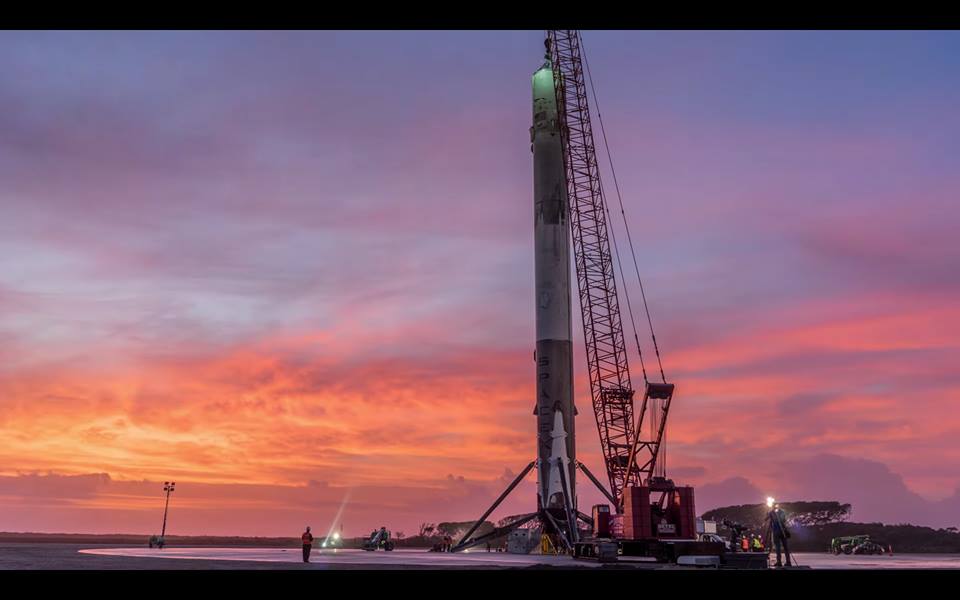
It now remains to be seen if recovering and refurbishing an entire rocket stage and its engines is indeed cheaper than building a new one — something that hasn’t been tried on a commercial scale. But if Wernher von Braun was right (and he usually was), this should be the way to go.











